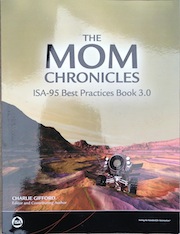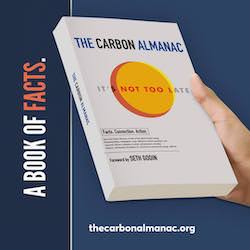
Operations Management Software Meant For Action
Two of my favorite thought leaders in the operations management space have been thinking about enterprise applications, ISA 95, and management. Of course I’m referring to Tim Sowell and Stan Devries of Schneider Electric Software (Wonderware).
It’s interesting that these thoughts come when the email reflector for the ISA 95 committee is really heating up with some of the best discussion I’ve seen in years.
Sowell nails the ultimate problem:
For the last couple of weeks Stan and I have been working with a number of leading companies in Oil and Gas, Mining, and F & B around their Operational Landscape or experience of the future.
Too often the conversations start off from a technology point, and we spend the initial couple of days trying to swing the conversation to the way in which they need to operate in the future and what their plans are around operations.
It becomes clear very quickly that there is a lot of good intent, but real thought into how they need to operate in order to meet production expectations both in products and margin has not been worked through.
Thinking about and discussing technology only leads only to futile intellectual exercise (unless you are a technology developer), to quote another smart person, “Full of sound and fury, yet signifying nothing.”
Devries had begun the discussion showing how using ISA-95 and TOGAF (The Open Group Architecture Framework) together becomes a powerful model for understanding operations.

TOGAF Model
ISA-95 is the strongest standard for operations management interoperability, and its focus is on data and its metadata. ISA-95 continues to evolve, and recent enhancements address the needs of interoperability among many applications, especially at Level 3 (between process control and enterprise software systems). One way to summarize ISA-95’s focus is on business and information architectures.
TOGAF is the strongest standard for enterprise architecture. One way to summarize TOGAF’s focus is on business architecture, information architecture, systems/application architecture and technology architectures. When considered with this perspective, ISA-95 becomes the best expression of the data architecture within TOGAF, and ISA-95 becomes the best expression of portions of the business architecture. Central to the TOGAF standard is an architecture development method (ADM), which encourages stakeholders and architects to consider the users and their interactions with the architecture before considering the required data.
To drive this thinking toward action, Sowell notes, “Over and over again we see the need for faster decisions, in a changing agile world, and this requires an ‘understanding of the future’ this maybe only 1/2 hour. It is clear that modeling of future is not just something for the planner, it is will become a native part of all operational systems.”
Does this issue require forecasting or predicting? Devries answers:
- At this stage, we propose a definition of “forecasting”: a future trend which is a series of pairs of information, where the pairs include a value and a time. The accuracy of the values will be poorer as the time increases, but the direction of the trend (trending down or up, or cycling) and the values in the near future are sufficiently useful.
- In contrast, “predicting” is an estimate that a recognized event will likely happen in the future, but the timing is uncertain. This is useful for understanding “imminent” failures.
People tell me that the most important application for the Industrial Internet of Things is predictive maintenance. GE sells that with its jet engines. Companies whose production requires huge, expensive assets are seriously implementing it.
Sowell and Devries take us the step beyond into operations management as well as maintenance.
This is important for manufacturers and producers to digest.







